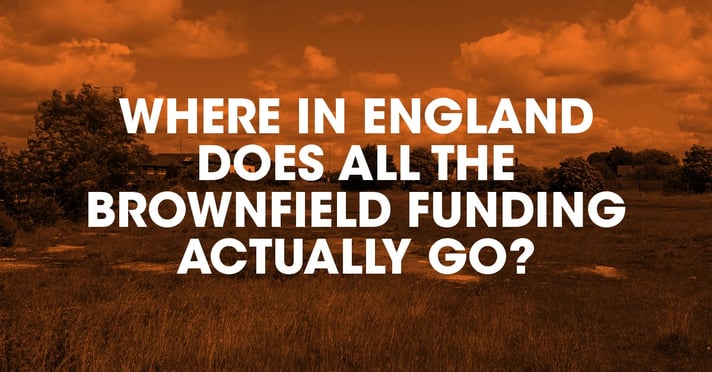Let's see where it's all going
The first map, below, lays out the funding from this release that has been awarded to every authority, with every ward in the respective authority highlighted as a recipient.
Read on for a bit more information on why this one doesn’t quite give you the full story.
The difficulty with the data
The most recently released government data doesn’t break down how much funding will reach the individual wards in every recipient council.
For instance, the data released provides larger councils like Essex, Norfolk, and Warwickshire funding for their approved brownfield projects.
Those councils are responsible for a number of smaller wards, and it’s unclear right now which wards have applied successfully for projects, but with 59 individual regeneration projects across 41 councils in this round, some of the wards have to miss out.
This is why the map above gives a slightly false impression where the funding is going, because the respective wards of Essex and Norfolk are not each receiving £330,000 each.
Working out the knots
While it’s also incorrect to assume that each area will receive an equal portion of the brownfield funding pie, for the same reasons we explained above, spreading it evenly across a council’s wards gives us a clearer idea of which areas are going to receive funding.
The map below takes the funding allocated to each council, and spreads it across the entire area for which that council is responsible.
This gives us a slightly more accurate picture of how the weight of funding evens out across England, even if it’s still not perfect.
While we can still see a concentration of funding around areas in the South, it shows a more equitable distribution going north.
We can’t give a truly accurate map until the figures on which projects, and in which wards, are released – but we can get a good idea of what’s going on in this round of brownfield funding.
The winners, small and large
The five largest funding awards in this round
| Haringey Council | 5,913,369 |
| Ipswich Borough Council | 3,340,500 |
| Lancaster City Council | 2,769,343 |
| Sunderland City Council | 1,943,657 |
| Basildon Borough Council | 1,847,037 |
The five smallest funding awards from this round
| Harrogate Borough Council | 33,000 |
| North East Lincolnshire Council | 50,000 |
| Epsom & Ewell Borough Council | 75,000 |
| Mole Valley District Council | 90,000 |
| Dover District Council | 100,535 |
It will not escape anyone’s attention (whichever side of the London-centric fence you sit) that three of the largest funding awards are within striking distance of the national capital. But at the same time, we should note that two of the top five-funded areas are well within the boundaries of the North.
Of the £35m announced in the 2022 round of funding, around £8.5 will be allocated to projects that could be described as in the North. Combined with the previous release of funds in 2018, that brings the total released for brownfield regeneration funding in the North to just shy of £16.5m across both rounds of funding.
We’ll go into more detail on the 2018 round of funding below.
Past and present brownfield funding
As we mentioned earlier, the most recent release of brownfield regeneration funds is the second round of funding released since 2018.
Using data released by the fund manager, One Public Estate, we can take a look at the last round of funding, and how the totals stack up.
On the left, below, you can see the data on the funds released in 2018. Then, on the right, you can see the how the total funding from the Brownfield Land Release Fund stacks up across England.
|
|
|
Planning a brownfield build of your own?
If you’re planning a brownfield regeneration project, it’s time to talk to LABC Warranty.
Whether it’s part of the Brownfield Land Release Fund or not, we’re always happy to hear about your upcoming developments and talk about supporting your projects.


Have your say